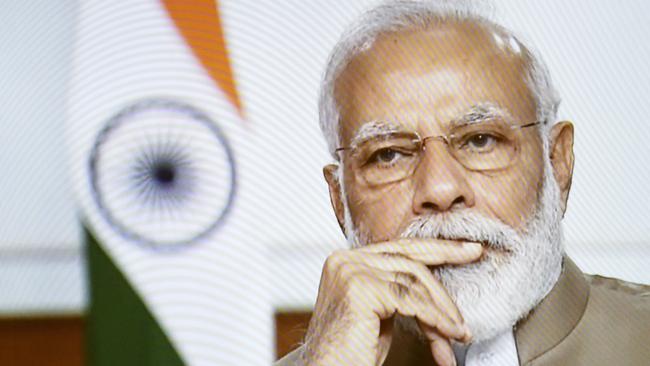India a much better trading partner than China

The protests and parties will be muted this year due to coronavirus restrictions, but that won’t stop more than a billion people tuning in to watch the parade. Yes, a billion. January 26 is India’s Republic Day, commemorating the 1930 declaration of Purna Swaraj (complete self-rule), which set it on the road to independence.
January 26 is also the date in 1950 when independent India put an end to British dominion status and adopted a republican constitution. First president Dr Rajendra Prasad was sworn in that day. His successor, Ram Nath Kovind, will receive the salute of the troops on Tuesday in New Delhi.
There will also be protests. Echoing the Invasion Day rallies in Australia, a small proportion of India’s Muslims and their supporters in the intelligentsia will gather to decry the majoritarian politics of Prime Minister Narendra Modi and his Bharatiya Janata Party, accompanied by inevitable charges of fascism and racism. For everyone else, Republic Day will be the biggest party of the winter, while here in Australia, it’s a great time for an Indian expat summer picnic. Indians are the third-largest foreign-born people in Australia in mid-2019, and the 660,000 Indian-born people here are almost certainly the second-largest group today, having overtaken Chinese-born residents during the coronavirus pause in immigration.
Though still smaller than the UK-born population of Australia, India’s diaspora stands out for its extraordinarily high levels of education, with 57.8 per cent of adults possessing a university degree. That compares to 43.4 per cent for China, 24.2 per cent for England, and 17.5 per cent for New Zealand.
Indian-Australians are also distinctive for the enthusiasm with which they seek to build connections between their old and new homes. Unlike immigrants from China and other undemocratic countries lacking the proper rule of law, immigrants from India are here to build bridges, not burn them. That makes the diaspora community a particularly valuable resource for Australians seeking to capitalise on India’s large population, rapid economic growth and voracious demand for education.
Australian exports to India consist almost entirely of minerals, predominantly coal. India is rapidly replacing China as the top destination for our coal, and everyone knows India’s Adani Group is developing the controversial Carmichael coalmine in central Queensland. Yet few Australians are aware the Adani Group is also India’s largest producer of solar power, and recently signed a contract to develop an additional 8 gigawatts of solar capacity by 2025. That’s the kind of basic insight into the Indian economic landscape Indian-Australians are well placed to share.
India also has vast potential as a growth market for Australian lifestyle products such as wine, specialty apparel and baby products. But the big opportunity in India — and the one where Australia has the greatest opportunity to leverage its Indian diaspora population — is education. Before the COVID pause, many Australian universities were looking to India to take over from China as the next big international student growth market. But what India really needs is for Australian universities to set up shop in India.
Last year, the Indian government announced plans to allow foreign universities to open local campuses. India is not looking to subsidise offshore prestige campuses, like those of the many American private universities in China and the Persian Gulf. What the government wants is truly local institutions that bring in foreign standards and expertise.
Australia’s large, highly educated Indian diaspora community is an invaluable resource for our universities seeking to enter the Indian market. A group of Indian expats, mostly based in Australia, has founded a transnational, not-for-profit School of Policy and Governance to improve educational opportunities for public policy professionals in India.
Decades of engagement never transformed China into a partner for Australia. Given its repressive political institutions, the best it could ever be was a market, and now even that is in doubt.
India is a much smaller market, but a much bigger opportunity. India is likely to keep growing long after the Chinese economy has stalled. But more importantly, it is a country with which we can build lasting institutional partnerships that will endure beyond the next change in government policy. It all starts with people-to-people ties, and Australia has 660,000 of them.
Salvatore Babones is an associate professor at the University of Sydney.



The first patriotic holiday of the year is upon us, and with it the opportunity to sport medals, ribbons and black armbands — as you choose. January 26 is always controversial, with highly publicised protests by a vocal minority marring an annual celebration of national pride featuring fireworks, cricket and an old-fashioned 21-gun salute.